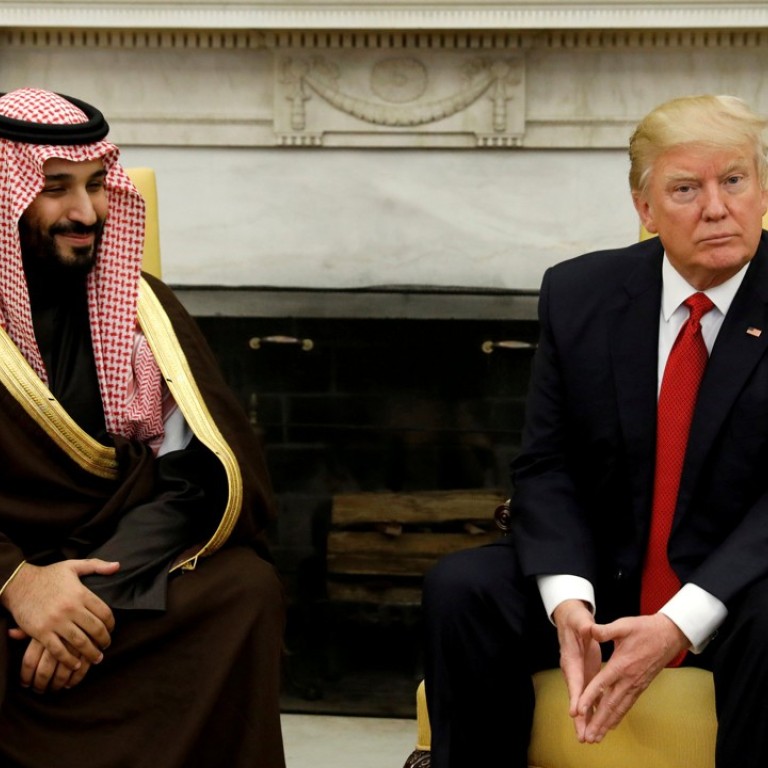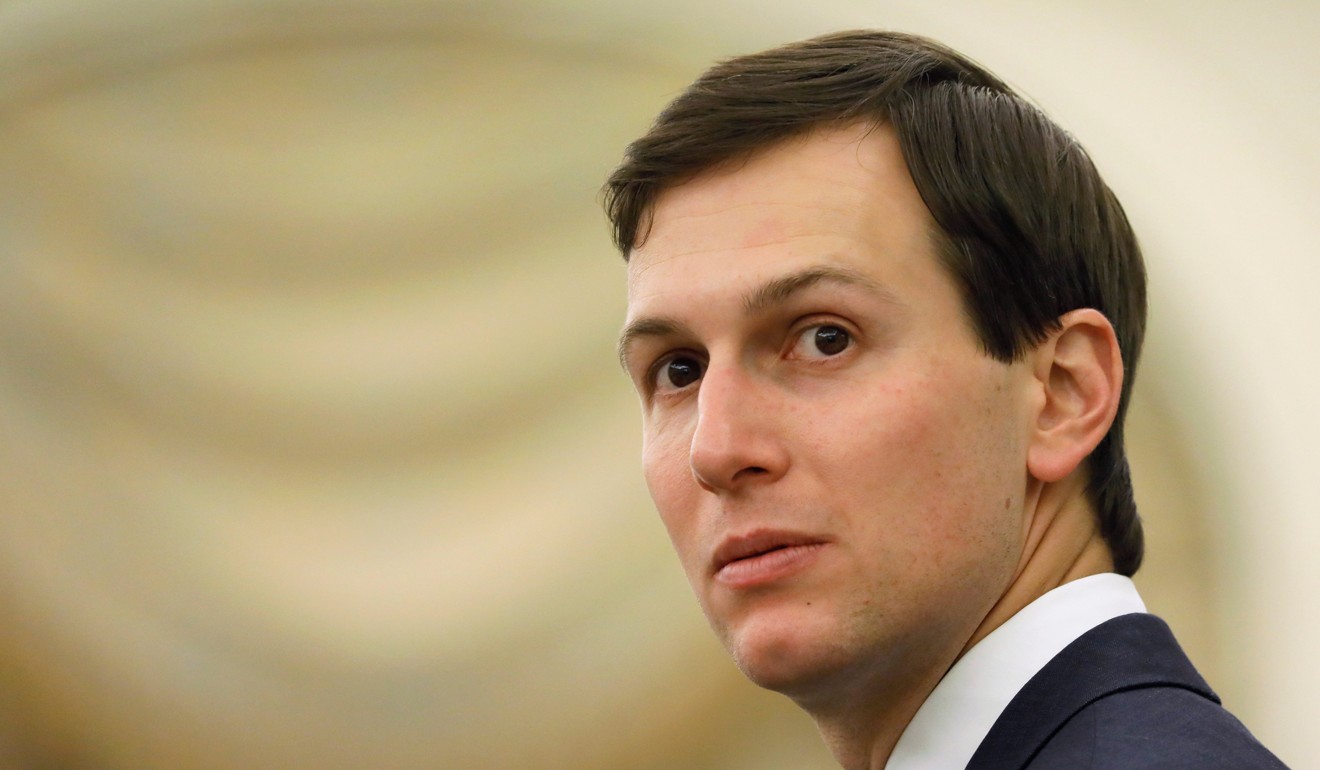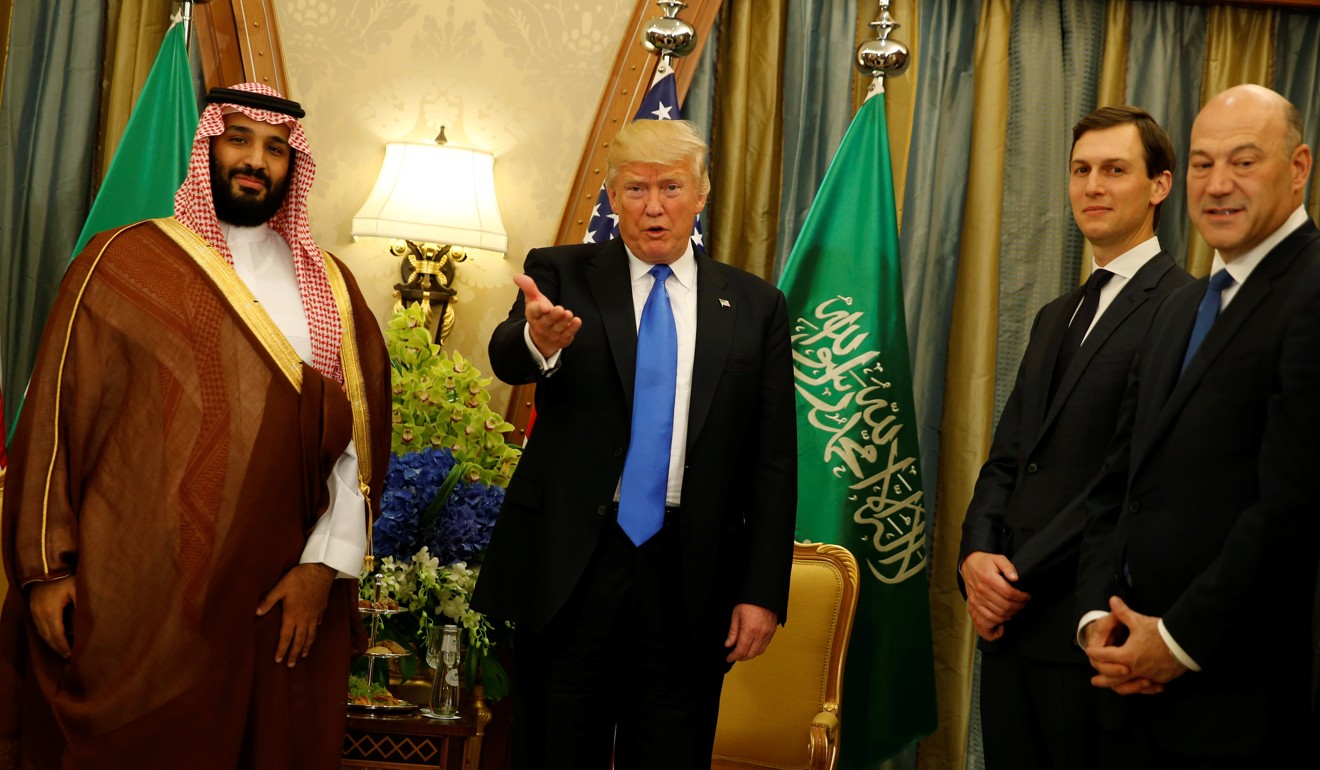
A tale of two princes: how Saudi king’s son and Trump’s son-in-law masterminded visit
Saudi prince has crafted an ambitious ‘Saudi Vision 2030’ plan designed to gradually modernise his country, shifting from oil dependence to greener energy sources
They’ve been dubbed the two princes, the rising young powers behind the gilded thrones in the budding strategic alliance between the House of Saud and the House of Trump.
Jared Kushner married into Donald Trump’s family and now serves as the president’s ubiquitous senior adviser. His portfolio of domestic and foreign responsibilities seems to grow heavier by the day.
Deputy Crown Prince Mohammed bin Salman is the Saudi defence minister and head of the state oil monopoly. More importantly, he has emerged from a crowded field of Saudi royalty to be second in line to King Salman, his 81-year-old father, who inherited the crown two years ago.
Starting last winter, even before Trump took office, the two trusted family advisers quietly joined forces to try to mend US-Saudi relations strained by President Barack Obama’s nuclear deal with Iran, which the Saudi rulers opposed, and his moralising on human rights, which they disdained.
The results were clear on Saturday as Kushner and Prince Mohammed kept a close eye on the president and the king during a long day of ceremonial and substantive events, including a roaring military flyover, a tribal war dance by men wearing flowing white robes and waving huge silver swords, and the signing of a US$110 billion arms deal, parts of which began under Obama.
The son of a New Jersey real estate magnate, Kushner, 36, traded his lucrative media and real estate empire to join Trump’s inner circle. He has been a rare figure of discretion and focus in a White House that often seems in chaos.
His influence here is helped by his wife, Ivanka, who was at his side on Saturday. The first daughter is so popular with Saudi women that the rarely overshadowed US president is widely known here as Abu Ivanka, or Ivanka’s father.
At age 31, the deputy crown prince already is such an influential leader in the conservative Saudi kingdom that he is known simply as MBS. One thing that has added to his popularity: he was educated entirely in Saudi Arabia, not at elite Western universities like other powerful members of the royal family.
An outspoken figure in conservative society, he has crafted an ambitious “Saudi Vision 2030” plan designed to gradually modernise his country, shifting from oil dependence to greener energy sources, diversifying the economy and expanding the military and women’s rights.
The Vision, which would require dramatic changes in a conservative society, clearly has the king’s blessing. It is touted on billboards, on TV commercials, in newspaper advertisements and on social media.

Soon after Trump’s unexpected election victory, it was Prince Mohammed who sought to initiate talks with Trump Tower. Kushner, who fielded much of the early diplomatic outreach during the transition, was on the receiving end.
Then in January, shortly after the inauguration, Kushner sat at the president’s side when he first spoke by phone with the Saudi king.
In March, the deputy crown prince huddled with Trump in the Oval Office. Kushner joined the meeting and the lunch in the State Dining Room that followed. The king’s son welcomed Defence Secretary James Mattis in Riyadh a few weeks later.
Big deal; he’s got a yacht. It’s the same with Trump
And on Saturday, Prince Mohammed merited his own one-on-one meeting with the president, immediately after one Trump had with his cousin and – for now – the anointed first-in-line to the throne, Crown Prince Muhammad bin Nayef.
“It was a great day,” Trump declared as he met Prince Mohammed.
Kushner seemed to agree; he was seen high-fiving national security adviser H. R. McMaster as the day proceeded.
On Sunday, Trump will deliver the keynote speech at a Twitter forum intended to focus on “how people can utilise social media networks for social good and to counter extremism and terrorism”. It is sponsored by the deputy crown prince’s foundation.
The White House bristles at references to the powerful pair as “princelings”, seeing a media attempt to overplay their youth and access to power. But they don’t deny the partnership helped produce a series of economic and military agreements that Trump could hail on Saturday.
Still, some foreign policy analysts have begun to question whether the White House is putting its finger on the scale in Saudi royal politics.
The previous White House was “careful to ensure that we took a balanced approach to the crown prince and the deputy crown prince, each of whom have important strengths,” said Eric Pelofsky, former senior director on the National Security Council under Obama.
The deputy crown prince holds a bachelor’s degree in law from King Saud University, and grew up shadowing his father while he served as governor of Riyadh, learning how to host tribal leaders and Western diplomats.

“He seems more Western driven” than royal relatives who studied at Harvard and Berkeley, said Ahmed Ibrahim, a Saudi businessman who has met the prince. “He was devoted to his dad when he was governor and he got lots of experience in the field. He took it from the ground up from a young age.”
His meteoric rise to power – his father passed over dozens of older princes to make him second-in-line to the throne – took many here by surprise, along with his agenda for rapid change.
Backed by his father, the prince has amassed more power than any previous prince, challenging a long-standing system of distributing positions among the royal family.
The prince has a reputation for opulence. Last year, while vacationing in the south of France, he spotted the Serene, a 440-foot yacht floating off the coast, and dispatched an aide to buy the ship from a Russian vodka tycoon for US$500 million.
“Big deal; he’s got a yacht,” said Hoda Helassi, one of 30 women on the monarchy’s 150-member consultative council. “It’s the same with Trump.”
Kushner is also immensely wealthy, though not as flashy.
His financial disclosure listed hundreds of real estate holdings and other assets totaling more than US$700 million. He had to resign from 266 positions and had already divested from connections that represented a conflict or was in the process of doing so as he transitioned to public service.
The prince’s political agenda is making the headlines in Riyadh, not his rich tastes.
He has championed the Saudi-led coalition that is battling Iranian-backed Houthi rebels in neighbouring Yemen, a war that has led to widespread complaints of Saudi airstrikes on medical facilities and civilian targets.
He also is building a regional coalition against Islamic extremists and regional enemy Iran, an endeavour that clearly puts him in sync with Trump.

